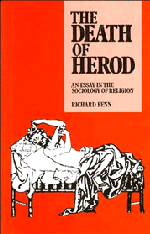Book contents
- Frontmatter
- Contents
- Acknowledgments
- Introduction
- 1 Two methodological viewpoints: the priestly and the prophetic
- 2 Description, interpretation, and explanation: modes of analysis
- 3 Levels of observation and of analysis: making the right choices
- 4 “What is going on here?” The role of the observer and the beginnings of theory
- 5 The search for useful concepts: evil and charisma
- 6 The making of a theory
- Epilogue
- References
- Author index
- Subject index
- Index of biblical citations
6 - The making of a theory
Published online by Cambridge University Press: 07 January 2010
- Frontmatter
- Contents
- Acknowledgments
- Introduction
- 1 Two methodological viewpoints: the priestly and the prophetic
- 2 Description, interpretation, and explanation: modes of analysis
- 3 Levels of observation and of analysis: making the right choices
- 4 “What is going on here?” The role of the observer and the beginnings of theory
- 5 The search for useful concepts: evil and charisma
- 6 The making of a theory
- Epilogue
- References
- Author index
- Subject index
- Index of biblical citations
Summary
It is the task of the observer, I have suggested, to come up with a theory. Remember, of course, that this is an introduction to sociological method: not a book on theory itself. Our method here will therefore be necessarily inductive. That is, it will have to be developed from observations and insights, from assumptions and analyses rather than from a body of theory itself from which we might derive some working explanations about the crisis in the Herodian succession and its implications for Jewish Christian origins.
Let us begin with assumptions. In discussing recent collections of essays by social anthropologists I tried to describe two dilemmas that result in a double-bind within certain patrilineal traditional societies. On the one hand, these societies must gain access to the sources of life: women, children, the fields, ancestral spirits, and the vitality that is passed from one generation to the next. On the other hand, however, to lay hold of these sources of life is to recognize that one must eventually give them up. To gain life, then, it is necessary to offer sacrifices. That is the first dilemma. The second dilemma is like the first: its inverse, as it were. To ward off the threat of death, either directly or indirectly, traditional societies have sought to impose rules and rites for purification. That is, to keep at a safe distance from disruptive influences that might disturb a society's continuity and ability to reproduce itself, a society seeks to impose rules for purity.
- Type
- Chapter
- Information
- The Death of HerodAn Essay in the Sociology of Religion, pp. 157 - 181Publisher: Cambridge University PressPrint publication year: 1992



